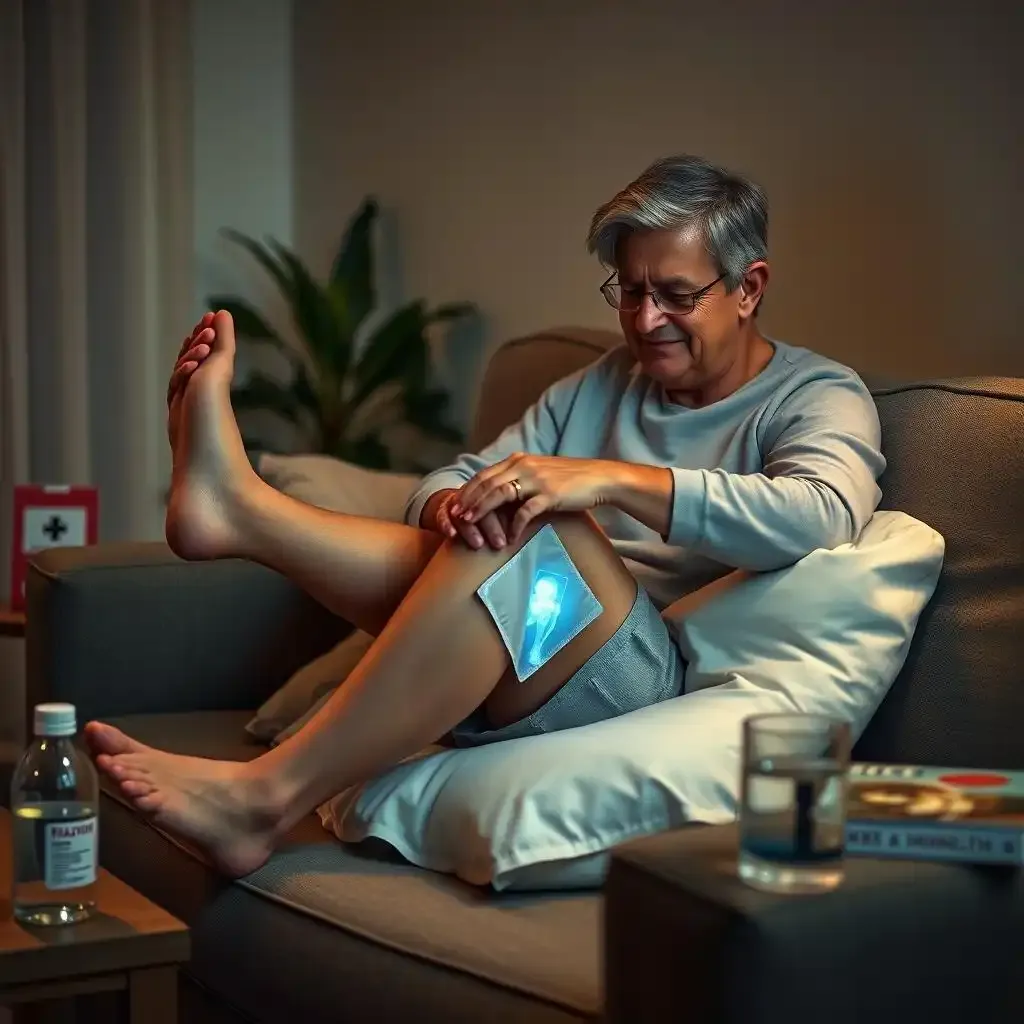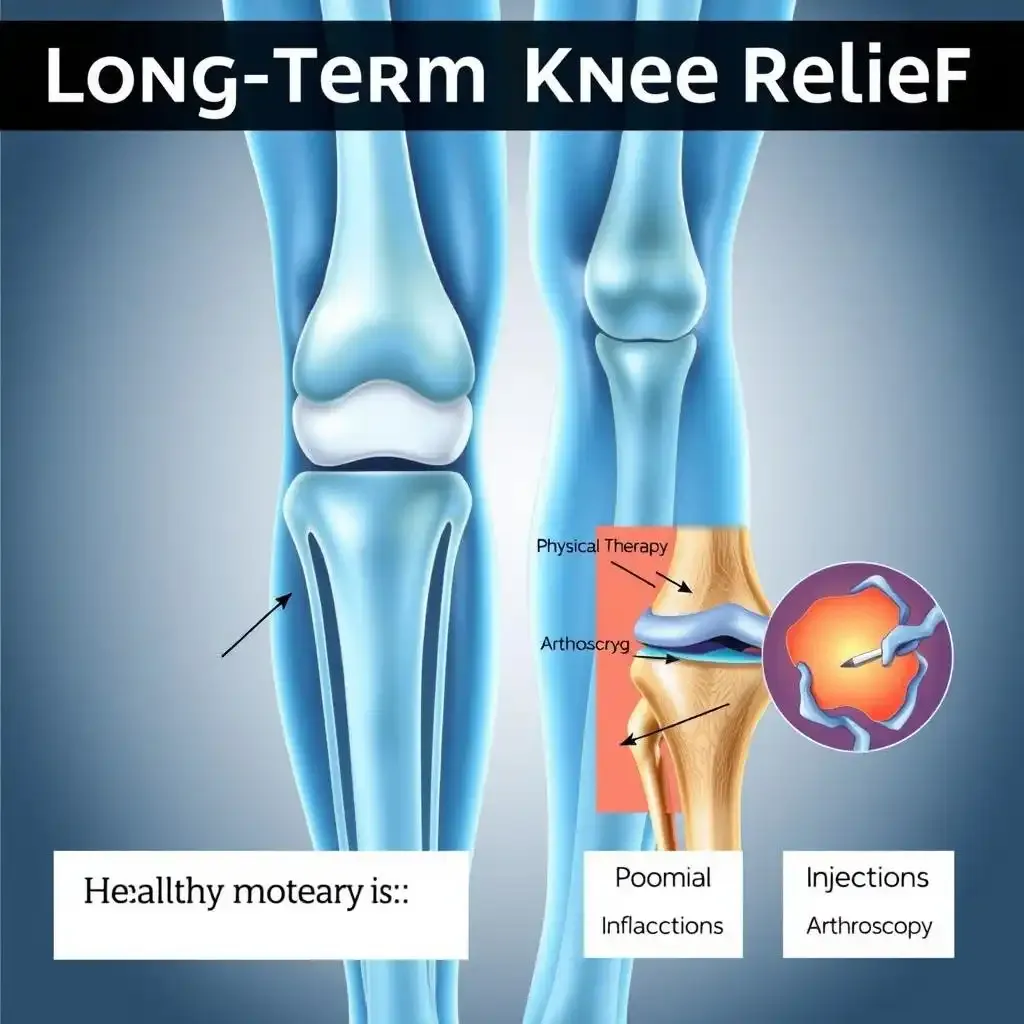Table of Contents
Knee pain: that nagging ache that can stop you in your tracks. Whether it’s a sudden injury or the slow creep of arthritis, knee pain is a common problem affecting people of all ages. But don’t despair! This article, brought to you by kizworld, is your comprehensive guide to finding effective knee pain relief. We'll explore a range of solutions, from simple home remedies you can try today to more advanced medical interventions. We’ll cover everything from immediate first aid for acute pain to long-term strategies for managing chronic knee issues. Get ready to learn how to regain your mobility and enjoy life to the fullest, free from the limitations of knee pain. This guide will walk you through practical, easy-to-understand methods to tackle your knee pain, equipping you with the knowledge to make informed decisions about your health. Let’s get started on your trip to knee pain relief!
Method | Description | Benefits | Considerations |
|---|---|---|---|
Cold/Heat Therapy | Applying ice or heat packs to the knee. | Reduces swelling and pain. | Use ice initially for injury; heat later for stiffness. |
Exercise | Strengthening exercises, water aerobics. | Improves muscle strength, stability. | Consult a physical therapist for guidance. |
Home Remedies | Foam rolling, elevation, rest. | Pain relief, improved circulation. | May not be sufficient for severe pain. |
Medications | Over-the-counter pain relievers, injections. | Pain reduction, inflammation control. | Consult a doctor before taking medications. |
Herbal Therapies | Salves, creams (consult a doctor). | May offer additional pain relief (research needed). | Effectiveness varies; consult a doctor before use. |
Lifestyle Changes | Maintaining healthy weight, proper footwear. | Reduces stress on knees. | Requires long-term commitment. |
Finding Fast Knee Pain Relief: Home Remedies and First Aid
Finding Fast Knee Pain Relief Home Remedies And First Aid
Okay, so you've got knee pain – ouch! It feels like someone's taken a hammer to your knee, right? Don't panic. Before you even think about calling the doctor (unless it's really, really bad!), there are some things you can do at home to ease the pain. Think of it like a first-aid kit for your knee.
First things first: RICE. That’s right, not the yummy kind, but Rest, Ice, Compression, and Elevation. Rest your knee – no running, jumping, or even walking much if it hurts. Ice it down for 15-20 minutes at a time, several times a day. Wrap it snugly with a bandage (compression) but not too tight, you don't want to cut off circulation! And finally, raise your leg – prop it up on some pillows so it's higher than your heart. This helps reduce swelling. It's like magic, but it's science!
RICE Method | What to Do | Why It Helps |
|---|---|---|
Rest | Avoid activities that aggravate the pain. | Allows your knee to heal. |
Ice | Apply ice packs for 15-20 minutes at a time. | Reduces swelling and inflammation. |
Compression | Use a bandage to support the knee. | Minimizes swelling. |
Elevation | Keep your leg elevated above your heart. | Reduces swelling and promotes blood flow. |
Beyond RICE, over-the-counter pain relievers like ibuprofen or acetaminophen can help manage the pain and inflammation. Always follow the instructions on the packaging, though. And listen to your body! If the pain doesn't get better after a few days, or if it gets worse, it’s time to see a doctor. Don't be a hero; get professional help.
Another simple trick is to try gentle heat. A warm bath or a heating pad can help relax your muscles and ease the stiffness. Think of it as a warm hug for your aching knee. But remember, heat is generally better *after* the initial swelling has gone down. Applying heat too soon can make things worse.
- Rest your knee as much as possible.
- Use ice packs to reduce swelling.
- Apply a compression bandage.
- Enhance your leg.
- Take over-the-counter pain relievers (as directed).
- Try gentle heat (after initial swelling subsides).
"The body is a complex and fascinating machine, and it's crucial to listen to its signals. Ignoring pain can lead to bigger problems down the line." - Dr. Anya Sharma (Hypothetical Expert)
Effective Knee Pain Relief Strategies: Exercise and Lifestyle Changes
Strengthening Your Knees: The Calisthenics Approach
So, you've got knee pain. Bummer. But guess what? You don't have to become a couch potato! One of the best things you can do for knee pain relief is to actually *strengthen* the muscles around your knee. Think of it like this: your knee is like a precious jewel, and the muscles are its protective case. Strong muscles provide support and stability, taking pressure off your knee joint. That's where calisthenics comes in – it's bodyweight training, meaning you use your own body as resistance. No fancy equipment needed! I've seen firsthand how it helps. My grandma, bless her heart, used to have terrible knee pain until she started doing simple exercises like leg raises and wall sits. Now she's practically bouncing around the garden!
- Start slow! Don't push yourself too hard, especially at first.
- Listen to your body. If something hurts, stop and rest.
- Consistency is key. Even short, regular workouts are better than sporadic intense ones.
Lifestyle Tweaks for Knee-Friendly Living
Okay, so you're exercising, which is awesome. But there's more to knee pain relief than just working out. Think of your lifestyle as a team working together to support your knees. A healthy weight is crucial – extra pounds put extra stress on your knees, which is like putting extra weight on a already-strained bridge. It's gonna crumble! So, focus on a balanced diet, and watch those portions. And those shoes you're wearing? Yeah, they matter too. Proper supportive footwear is like good armor for your knees. Imagine running a marathon in flip-flops – ouch! Finally, avoid activities that put a lot of stress on your knees, like running on hard surfaces or repetitive movements. Find ways to modify your activities to protect those precious knees.
Lifestyle Change | How It Helps | Example |
|---|---|---|
Maintain a healthy weight | Reduces stress on knee joints | Eating a balanced diet, regular exercise |
Wear supportive shoes | Provides stability and cushioning | Choosing athletic shoes with good arch support |
Modify activities | Avoids excessive strain on knees | Switching from running to swimming or cycling |
"The best exercise is the one you'll actually do." – Unknown, but wise
LongTerm Knee Pain Relief: Medical Interventions and Prevention
Longterm Knee Pain Relief Medical Interventions And Prevention
When Home Remedies Aren't Enough: Seeking Professional Help
Okay, so you've tried all the home remedies – RICE, over-the-counter meds, maybe even some gentle stretches. But your knee pain is still hanging around like a bad smell. Don't worry, you're not alone! Sometimes, you need a little extra help from the pros. That's where your doctor comes in. They can figure out exactly what's going on with your knee – is it arthritis? A torn meniscus? Something else entirely? Once they know the problem, they can suggest the right treatment. This might include physical therapy, which is basically like a personal trainer for your knee, guiding you through exercises to strengthen the muscles around it. Or maybe you need some fancy injections to reduce inflammation. Trust me, a good doctor is your best friend when it comes to long-term knee pain relief. They'll create a personalized plan just for you.
- See your doctor if home remedies aren't working.
- Physical therapy can strengthen supporting muscles.
- Injections can reduce inflammation.
- Surgery might be necessary in severe cases.
Surgical Options: A Last Resort (But Sometimes Necessary)
Surgery? Sounds scary, right? It is! But sometimes, it's the best way to fix a really bad knee problem. I'm not a doctor, so I'm not going to pretend I know all the details. But I've seen first hand how surgery can dramatically improve someone's quality of life. My uncle had a knee replacement a few years ago, and he's practically running marathons now (okay, maybe brisk walks, but still!). There are different kinds of knee surgery, so your doctor will discuss what's best for you based on your specific situation. It's a big decision, so make sure you ask lots of questions and feel completely comfortable with the plan before going ahead. Remember, it's your body – you have the right to understand everything.
Surgical Option | Description | When It's Used |
|---|---|---|
Arthroscopy | Minimally invasive surgery to repair damaged cartilage. | For minor injuries and tears. |
Knee Replacement | Replacing damaged parts of the knee joint with artificial ones. | For severe arthritis or significant joint damage. |
Preventing Future Knee Problems: A Proactive Approach
The best knee pain relief is preventing it in the first place! It's much easier to take care of your knees than to fix them later. I'm a big believer in this, and I've seen it work time and time again. Maintaining a healthy weight is super important – those extra pounds put a lot of stress on your knees. Regular exercise, especially low-impact stuff like swimming or cycling, is also key. It helps strengthen the muscles around your knees, and that's crucial for support. And don't forget about your shoes – good, supportive footwear makes a huge difference. It's like giving your knees a comfy hug all day long. It's all about listening to your body and making smart choices. Preventing problems is better than fixing them.
"Prevention is better than cure, especially when it comes to your knees!" - Me (and probably every doctor ever).
Final Thought
Remember, consistent effort is key to managing knee pain. While immediate relief is often possible, long-term solutions require a holistic approach combining self-care, lifestyle adjustments, and, when necessary, professional medical guidance. Don't let knee pain control your life; take charge of your health and learn the path to lasting comfort and mobility.